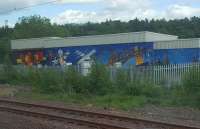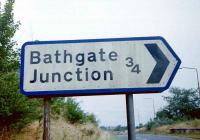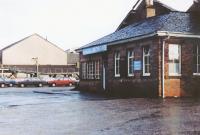Edinburgh and Bathgate Railway
Introduction
This line is open. ScotRail operates a service between Edinburgh and Bathgate and on to Airdrie and Glasgow. Until recently occasional freight trains carrying cars made use of the line to run to a car distribution terminal in Bathgate.
Dates
Locations along the line
These locations are along the line.
Bathgate Junction was created with the opening of the Edinburgh and Bathgate Railway line west to Bathgate [1st] in 1849. It met the Edinburgh and Glasgow Railway of 1842.
...
See also
Edinburgh and Glasgow Railway
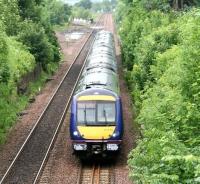
John Furnevel 29/06/2008

John Furnevel 28/06/2008
This double track eight arch masonry viaduct is west of Newbridge Junction on the Bathgate line. It is 121 yds long overall and 50 ft high.
...
This was the junction for the Newliston Shale Mines. These mines were on either side of the Brox Burn. The junction was east of Drumshoreland station and west of Bathgate Junction (now Newbridge Junction).
...
See also
Newliston Shale Mine Branch
This bridge is east of the former Drumshoreland station. The former Edinburgh and Bathgate Railway crosses over the Union Canal by a skewed double track bridge.
...
This was a two platform station just under a mile south of Broxburn. The main building was on the eastbound platform.
...
See also
Broxburn Branch (North British Railway)

David Panton 13/05/2021

Bill Roberton 23/05/1990

John Robin 30/03/1964
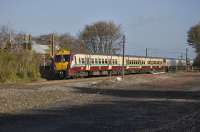
Bill Roberton 02/11/2010
This was not a true junction. The double track line from Newbridge Junction, to the east, singled here as it continued west. A temporary panel box opened in 1986, closing when taken over by the Edinburgh Signalling Centre.
...

David Panton 05/05/2021
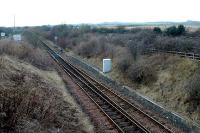
Ewan Crawford 18/02/2006
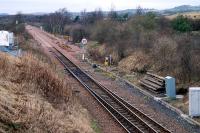
Ewan Crawford 27/01/2008
This junction was east of Uphall and directly east of Camps Junction [NB] with which it shared the signal box (essentially it was the same junction but on the north side of the railway instead of the south). It provided access to the Hopetoun and Uphall Oilworks Railway.
...
East of Uphall station was the junction for the Camps Branch (North British Railway). It was on the south side of the main line opposite Uphall Junction (slightly to the east). The junctions shared a signal box. The branch ran south to Camps Quarry and the Pumpherston Oil Works.
...
See also
Camps Branch (North British Railway)
This is a two platform station with a car park alongside each platform. Uphall itself is to the north and the station is in the village of Uphall Station, which developed after the station opened.
...
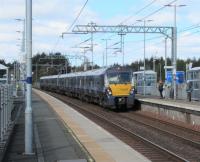
David Panton 05/05/2021

David Panton 26/05/2021
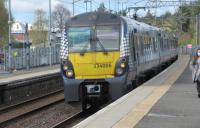
David Panton 05/05/2021
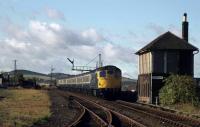
John Clark /10/1974
This was the junction for the short Bangour [Hospital] branch. A box opened here in 1903 in preparation for the branch opening. The branch was from the Edinburgh and Bathgate Railway, on the north side and approached from the east.
...
See also
Uphall and Bangour Asylum Railway
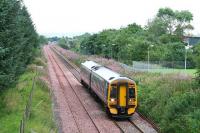
James Young 18/08/2008
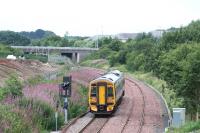
James Young 18/08/2008
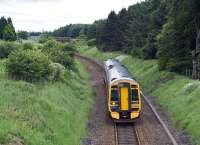
James Young 26/06/2007
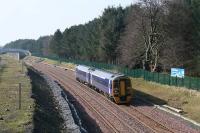
James Young 18/03/2009
This station was east of the present Livingston North station. It was probably built for the Dechmont estate (no direct road to Dechmont House, but a road north to Dechmont Village). It was an early closure (not directly replaced by Dechmont [2nd]).
...
This is a modern two platform station. The original Livingston [1st] station was further west.
...
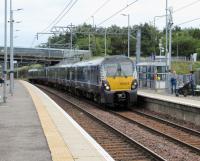
David Panton 17/08/2018
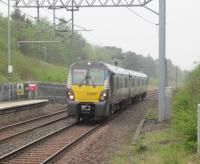
David Panton 13/05/2021
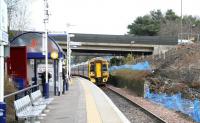
John Furnevel 28/01/2008
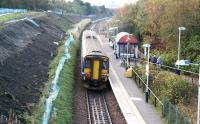
John Furnevel 11/11/2007
The single track line from Cawburn Junction divided here into two single track lines, running parallel and with the appearance of a double track railway, which ran west for over two miles to Bathgate [4th]. The northern line ran to the passenger station and southern to the car distribution sidings. The layout opened coinciding with the opening of the station in 1986.
...
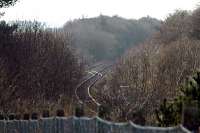
Ewan Crawford 18/02/2006
This was the original station in Livingston closed in 1948 along with other stations between Airdrie and Newbridge Junction. It was a two platform station. There was a dock at the east end of the westbound platform, the line serving this coming from a long siding on the south side of the line, approached from the west. The signal box was to the west of the station and on the south side of ...
More details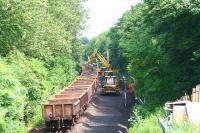
James Young /07/2007
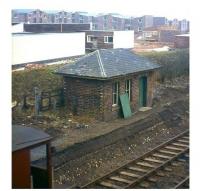
Frank Spaven Collection (Courtesy David Spaven) 23/02/1965
...
More detailsAn abortive turnout was installed here for an STVA depot (the original site having been taken over for the site of Bathgate LMD. The turnout remains in place (2020) but is unlikely to be used. There is a facing crossover and approach is from the east.
...
This junction opened in 1875 to serve the Seafield Oil Works near West Calder. The branch, North British Railway owned, was single track. The junction made a trailing connection with a trailing crossover to the west. The signal box was to the north of the junction.
...
See also
West Calder Branch (North British Railway)

John Furnevel 14/08/2006
West Calder Branch Junction was moved further west in 1920, this brought it closer to Bathgate Shed and Bathgate Yard which now had looped sidings rather than sidings only approached from the west. The new box controlled their eastern approach. The new connection was trailing but with a facing crossover. The West Calder Branch Junction box was replaced with a new box 'Bathgate East' at ...
More details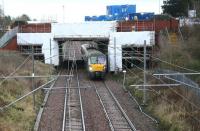
John Furnevel 19/12/2019

John Furnevel 19/12/2019

John Furnevel 14/08/2008
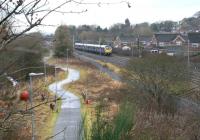
John Furnevel 19/12/2019
To the immediate west (the west side of Blackburn Road) of the former Bathgate East Junction [2nd] is the turn out for Bathgate LMD.
...
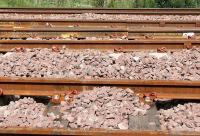
John Furnevel 14/08/2008
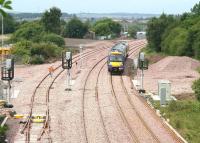
John Furnevel 31/07/2008
This is a Light Maintenance Depot to the east of Bathgate station and on the south side of the line. It was opened in connection with the electrification of the line and re-opening west to Airdrie (and Drumgelloch).
...

John Furnevel 26/04/2018

John Furnevel 15/05/2015
Bathgate shed was east of Bathgate Upper and on the north side of the line. This six road shed was replaced in 1954 with a new four road shed on the same site. Approach was from the east. It was the third shed in Bathgate.
...

John Furnevel 28/08/2009

John Furnevel 31/07/2008

John Furnevel 23/09/2008

K A Gray //1966
The western approach to Bathgate LMD is immediately east of Bathgate station.
...
This is a new two platform station which occupies a site east of the Bathgate [4th] terminus. The large car park to the north of the station is built on the site of Bathgate Shed.
...

John Clark 05/03/2005

John Furnevel 20/10/2010
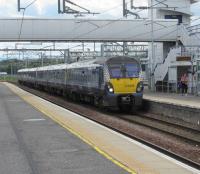
David Panton 18/06/2019
This junction was created in 1850 when the 1849 Edinburgh and Bathgate Railway was met by the Longridge to Bathgate (Edinburgh and Glasgow Railway) line just east of Bathgate [1st] station. The connection faced Edinburgh, allowing goods and minerals to run through whereas passenger trains would need to reverse to reach Bathgate station.
...
See also
Longridge to Bathgate (Edinburgh and Glasgow Railway)
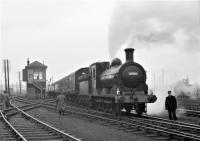
Robin McGregor 11/04/1966

Robin McGregor 08/01/1965
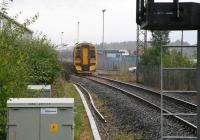
John Furnevel 19/08/2008
This was the fourth station to be opened in Bathgate and, when opened, the first in the town for twenty years following the closure of Bathgate Upper in 1956.
...
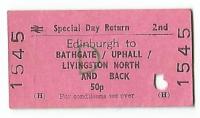
David Panton 24/03/1986

John Furnevel 11/09/2009
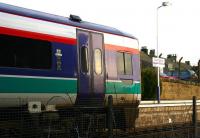
John Furnevel 05/12/2004
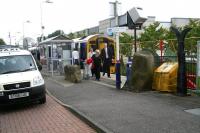
John Furnevel 19/08/2008
This was the first station in Bathgate. It appeared in working timetables as Bathgate E&G as that company operated the independent Edinburgh and Bathgate Railway.
...
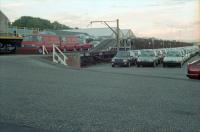
Ewan Crawford //1988










